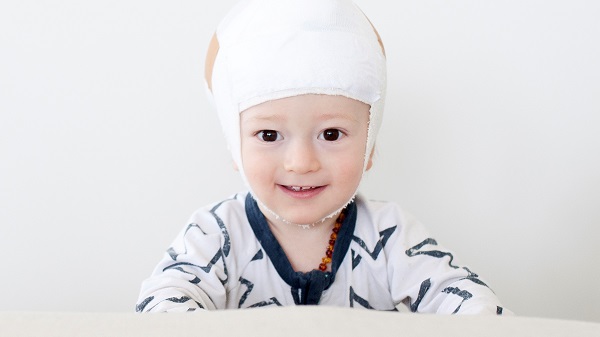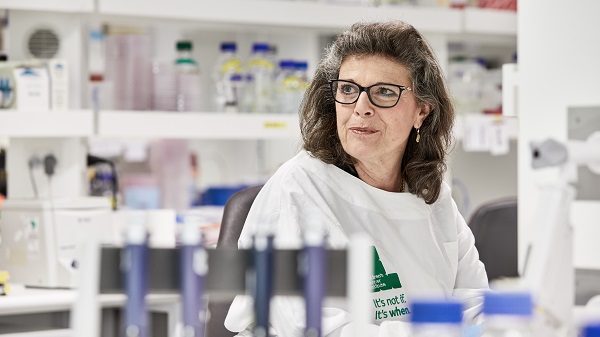The researcher who’s putting an end to childhood cancer
When Professor Michelle Haber was growing up in the 1960s, childhood cancer was virtually a death sentence. Today, survival rates are greater than 80%.
Through amazing advances in medical research, including the decades that Haber has spent understanding the genetic links between cancer and the effectiveness of various treatments, survival rates for even the rarest and most aggressive forms of childhood cancers are slowly starting to improve.
With advances in personalised medicine, “there are children being saved in hospitals today who would have died even six months or a year ago,” she says.

“We’ve seen remarkable wins with individual kids’ lives, where kids have literally been pulled back from the brink. When we see a child who has been on life support, who is then sent home, well, it’s tremendously rewarding.”
Haber has won multiple awards and honours for her research, and the Sydney-based Children’s Cancer Institute has tripled in size in the 15 years she’s been its Executive Director.
She’s now looking to the future, which she says holds great promise for how we deal with childhood cancers.
The turning point
As a child growing up in Liverpool in the UK, and then in Melbourne and Sydney, Haber loved the natural world, and was fascinated by insects and other biological wonders. Taking after her siblings, she studied science, and ended up at UNSW, where she studied clinical psychology and the effect of behavioural learning on pigeons, of all things.
“I loved research, but I knew I was in the wrong area – I felt I needed to make more of a difference,” Haber recalls.
She crossed over into medical research – specifically cancer research – just as scientists were unravelling the secrets of DNA, such as how to splice it, how to manipulate it, and how to transfer genetic material between different cells to dramatically affect their behaviour.
“It was an incredibly exciting time,” she says.
“We began to understand that these events that appeared to be random – such as whether or not a tumour responded to a drug – was linked to its genetic make-up. It was a critical turning point and has become the way forward for molecular biology.”
The next big break in cancer research was sequencing the human genome, which took almost 15 years, and was completed in 2003.
“That is now a routine assay, and is done on all patients on the personalised medicine Zero Childhood Cancer clinical trial, being run in partnership with the Kids Cancer Centre at the Sydney Children’s Hospital,” says Haber.
“Results can be completed in a week or so, and it’s come down in cost from billions, to millions, to hundreds of thousands, to about $5,000.”

Now, by understanding the underlying genetic structure of each individual child’s cancer, Haber says tailored drug ‘cocktails’ can be specifically designed for individual children, dramatically increasing the chance of recovery and reducing the devastating side effects of more generalised chemotherapy drugs.
“Most chemotherapy drugs are very blunt instruments. They’re poison,” she says. “They’re basically designed to kill rapidly dividing cells, and in a growing child’s body, pretty much every cell is rapidly dividing.”
Over the past few years, development in genetic analysis means drugs can now be prescribed that will target specific cancer cells in an individual.
“If you don’t match the right drug to the right biology, it’s much harder to beat that child’s cancer,” says Haber. She notes that, today, new drugs are being developed all the time.
“We don’t have enough tools in the toolbox yet – we’re at the beginning of this journey, and it’s a very, very exciting journey.”
Hope on the horizon
Haber is particularly excited about the progress she’s seeing in one of the children’s cancers she’s spent much of her career focusing on: neuroblastoma.
“It’s a terrible disease,” she says.
“It’s the most common form of cancer in young children, and causes 15% of all childhood cancer deaths. Even with the most aggressive treatments, which take these kids to within an inch of their lives, fewer than one in two children with high-risk neuroblastoma will survive.”
The good news is there are reasons to be excited about how we treat this disease in the future.
“We are identifying the genes that are driving neuroblastoma’s growth and aggressive behaviour, and working with international partners to develop combination treatments that will target those particular genetic changes,” says Haber.
An initial clinical trial has had promising results so far, and additional trials are now being planned with US collaborators.
“Our lab here in Australia, at the Children’s Cancer Institute, is leading the way internationally,” she says.
In addition, the Zero Childhood Cancer program has brought together all of the major Australian clinical and research groups working on childhood cancers to offer a detailed genetic analysis of every child with high-risk or relapsed cancer.
The idea is to identify the specific drugs that are most likely to be effective in treating their disease.
As the program’s name suggests, it’s hoped that this will one day provide researchers and doctors with the ability to wipe out all childhood cancers.
“Will that happen in our lifetime?” says Haber. “I don’t know, but I absolutely believe it is achievable.”
By Ken Eastwood
Updated 4 years ago